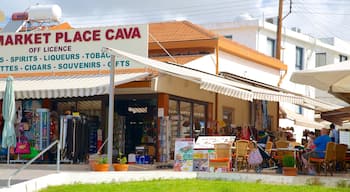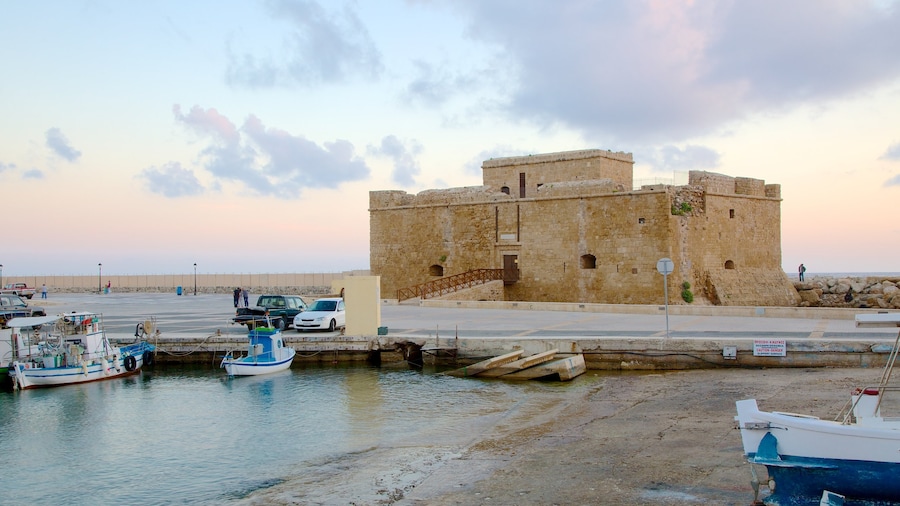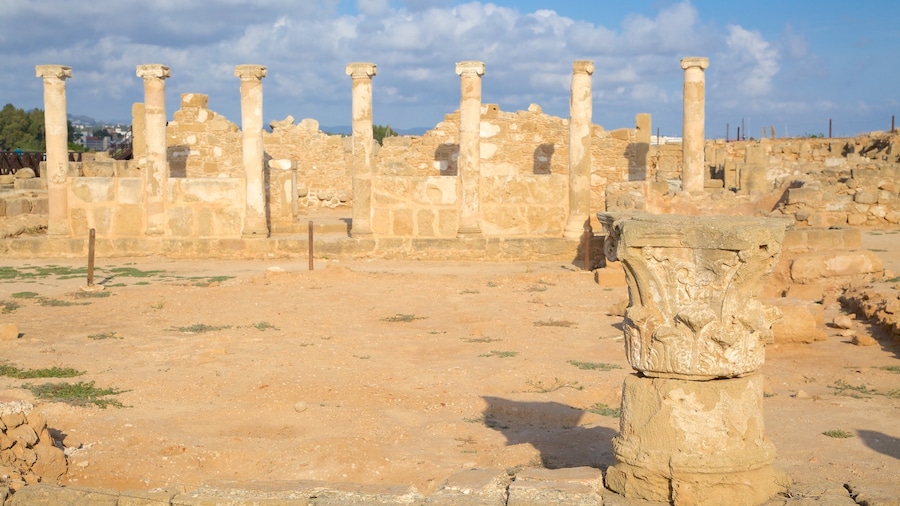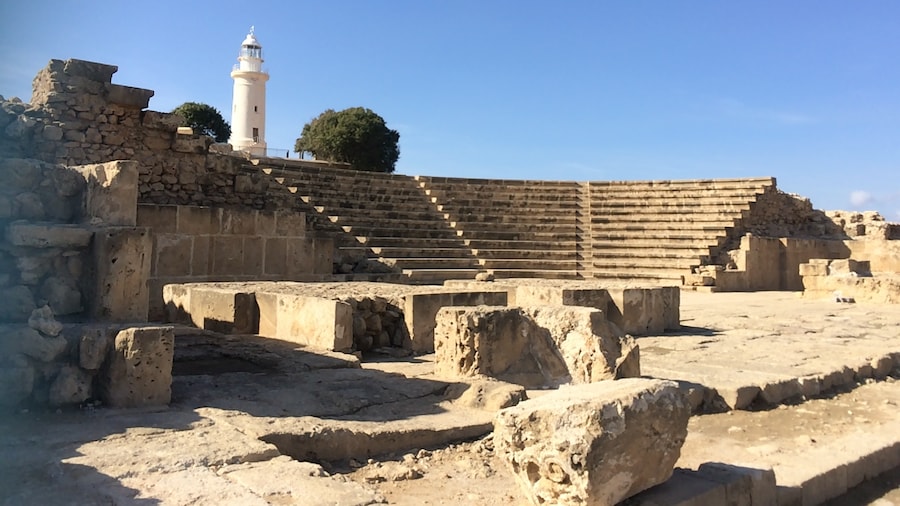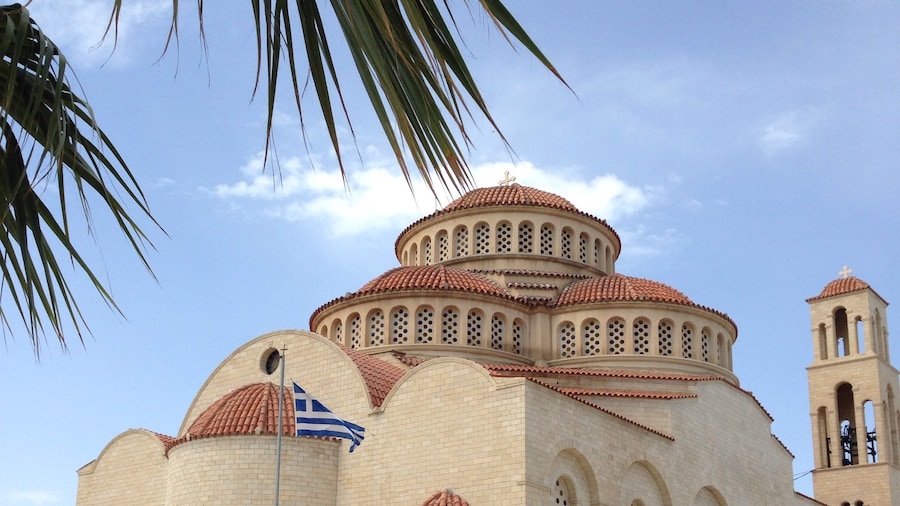On the west coast of Cyprus is a popular resort town with broadly appealing attractions. Find history, culture, watersports, nature and all-night revelry.
Paphos is a popular seaside destination with a historic past. Many visitors come for the beaches and nightlife and discover magnificent architectural treasures as well.
The Paphos area features more than 30 miles (50 kilometres) of coastline, with many beaches earning Blue Flag status for environmental quality. Vrisoudia, Municipal and Alikes beaches are closest to the town and popular with families. Snorkel and dive at Coral Bay or surf and windsurf at Laourou Beach. In summer, see loggerhead turtles nesting at Lara Beach or cool off at the Aphrodite Water Park.
Most of the town’s archeological sites are located near the harbour. Paphos Archaeological Park houses remains dating from prehistoric times to the Middle Ages. Admire the beauty and detail of elaborate mosaic floors in four Roman villas including the House of Dionysos and the House of Orpheus. Walk through the Tombs of the Kings, underground burial places carved out of rock, where aristocrats were interred. Explore the ruins of Saranta Kolones, a Byzantine fort. Sit on one of the limestone blocks in the 2nd-century Odeon, a large amphitheatre that hosts musical and theatrical performances in the summer.
Paphos has a rich biodiversity. Throughout the region follow nature trails that take you past waterfalls, through fields of crocuses and near farms, medieval ruins and caves.
Enjoy the loud and colourful nightlife. Karaoke bars, nightclubs and discos in the centre of town and at the beach draw in crowds of young people from across Europe. The aptly named Bar Street is an entire avenue of clubs and bars. For those who want a quieter stay, find plenty of tavernas and international restaurants in the harbour area.
Visitors will be easily understood in Paphos. Although the official languages are Greek and Turkish, many locals have a good command of English. There is also a large British expat community.
Reach Paphos by flying into its international airport, 5 miles (8 kilometres) outside the town. Get around by bus, rental car or on foot.







